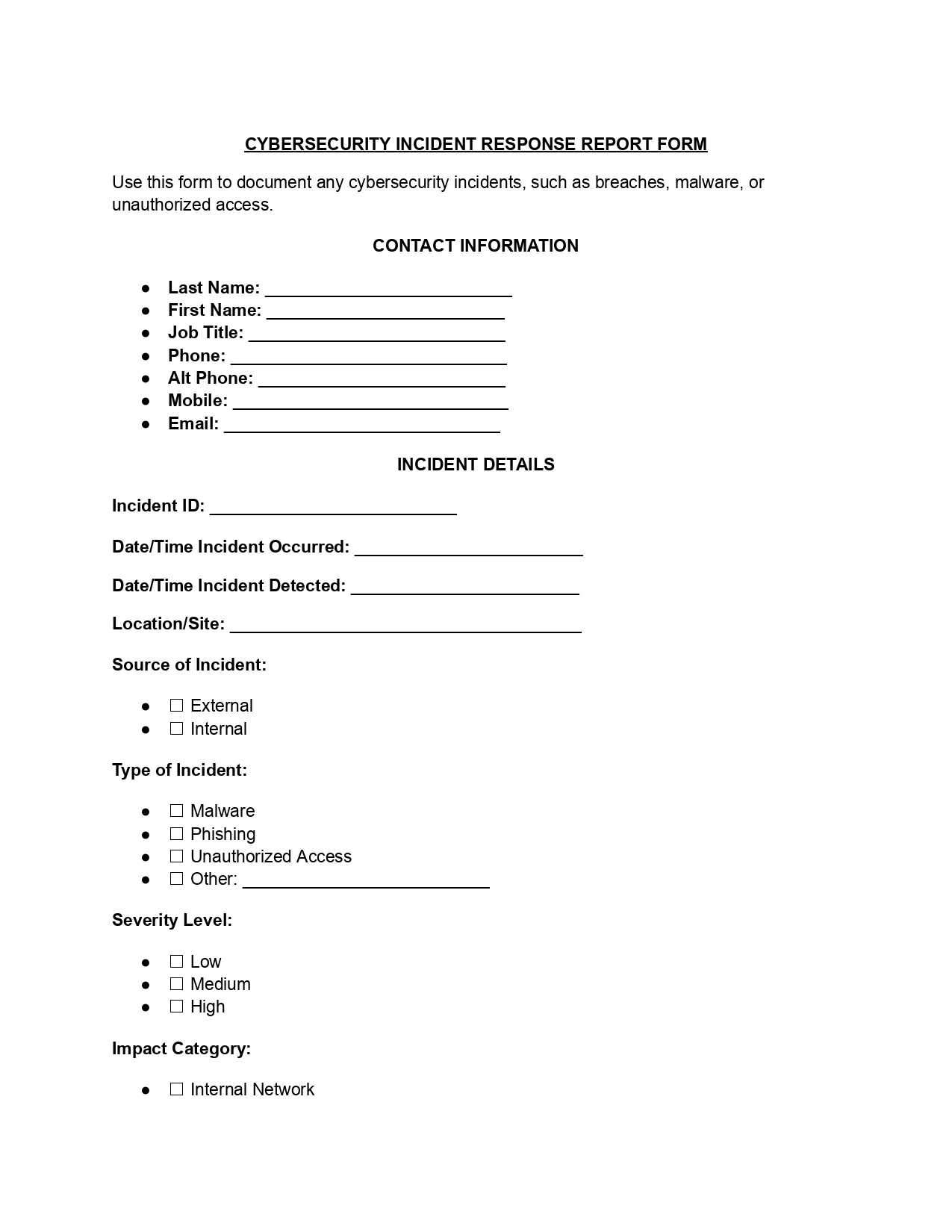A cybersecurity incident response report captures information about responding to security incidents within an organization. This form is helpful for the incident response procedure, guaranteeing that all pertinent information is gathered and activities are monitored in an organized manner.
Organizations can speed up the paperwork using a predefined cybersecurity incident response report template. Team members know exactly what information to gather and report, reducing delays and the risk of omitting critical details.
When to Use Cyber Incident Response Report Template?
The response team should begin documenting the event using the template as soon as a potential security threat is identified, such as unauthorized access or a malware infection. This way, all pertinent information is captured right from the start. Scenarios where the cybersecurity incident response report form is helpful include:
- Data breaches involving sensitive information.
- Ransomware attacks that encrypt company data.
- Phishing attempts that lead to unauthorized access.
The template helps structure the investigation and remediation efforts, ensuring a thorough approach to managing the incident.
Completing the report is essential for post-incident reviews and audits. For example, if a company experiences a data breach, the completed template can be reviewed to improve security measures and response strategies. It is also a compliance and training document, showing how the incident was handled and how similar incidents can be mitigated in the future.
How to Fill Out a Cybersecurity Incident Response Report
Completing a cybersecurity incident response report assists in managing and reducing cybersecurity incidents such as data breaches, unauthorized access, and malware attacks.
1. Fill Out Contact Information
Enter the personal and contact details of the person handling the incident response, ensuring clear points of contact for follow-up actions.
2. Document Incident Details
Record a unique Incident ID, determine the source (internal or external), specify the type of incident, and provide times, location, severity, impact, and if any sensitive data was affected.
3. List Systems and Services Impacted
Describe all systems and data affected to gauge the incident’s scope and assist in mitigation.
4. Describe the Incident
Give a detailed account of the incident, including what happened, potential entry points, and immediate effects.
5. Detail Mitigation Steps Taken
Write all immediate actions taken to mitigate the effects of the incident, including technical and communicative measures.
6. Add Additional Comments/Notes
Include any further observations, lessons learned, or recommendations that may help in future responses or investigations.
